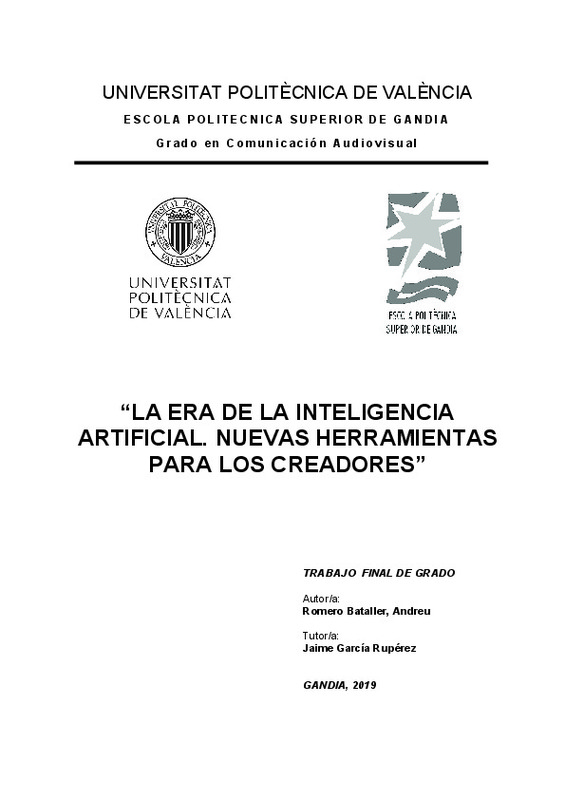|
Resumen:
|
[ES] La inteligencia humana nos convierte en seres racionales y es uno de nuestros rasgos diferenciales más característicos. Es tan definitoria que incluso se ha pretendido tras-pasar a las máquinas una inteligencia ...[+]
[ES] La inteligencia humana nos convierte en seres racionales y es uno de nuestros rasgos diferenciales más característicos. Es tan definitoria que incluso se ha pretendido tras-pasar a las máquinas una inteligencia artificial (IA) inspirada en la nuestra. Potenciada por el Deep Learning (aprendizaje profundo), la IA permite desarrollar las potencialida-des computacionales, aplicarlas a funciones como la creatividad (considerada hasta hace poco exclusiva del cerebro humano), y así convertirlas en nuevas y potentes herramientas para los creadores de contenido artístico. El logro máximo se alcanzará cuando la máquina pueda crear obras de arte por sí y libremente, o con restricciones mínimas. Para ello hay que superar grandes dificultades como, entre otras, dotar a las computadoras de sentido común, o adiestrarlas en capacidades tan complejas como la percepción visual.
Este trabajo pretende analizar qué requisitos formales debería presentar el Deep Lear-ning y qué dificultades y posibilidades hay para conseguir que la inteligencia artificial progrese y logre ser completamente creativa. Para ayudar a entender estos aspectos hemos repasado brevemente los antecedentes históricos, la tecnología necesaria, la creatividad artificial, sus componentes y rasgos propios, y algunas facetas artísticas en las que se ha aplicado: la literatura, las artes plásticas, la comunicación de masas¿
[-]
[EN] Human intelligence makes us rational beings and is one of our most characteristic distinguishing features. It is so defining that it has even been pretended that an artificial intelligence (AI) inspired by our own has ...[+]
[EN] Human intelligence makes us rational beings and is one of our most characteristic distinguishing features. It is so defining that it has even been pretended that an artificial intelligence (AI) inspired by our own has been passed on to machines. Powered by Deep Learning, AI allows us to develop computational potentials, apply them to functions such as creativity (until recently considered exclusive to the human brain), and thus turn them into new and powerful tools for creators of artistic content. The maximum achievement will be reached when the machine can create works of art by itself and freely, or with minimal restrictions. In order to do so, it is necessary to overcome great difficulties such as, among others, equipping computers with common sense, or training them in abilities as complex as visual perception.
The aim of this work is to analyse what formal requirements Deep Lear-ning should have and what difficulties and possibilities there are to achieve that artificial intelligence progresses and achieves to be completely creative. To help understand these aspects, we have briefly reviewed the historical background, the necessary technology, artificial creativity, its components and proper features, and some artistic facets in which it has been applied: literature, plastic arts, mass communication...
[-]
|







